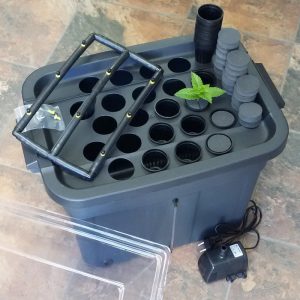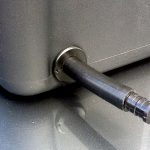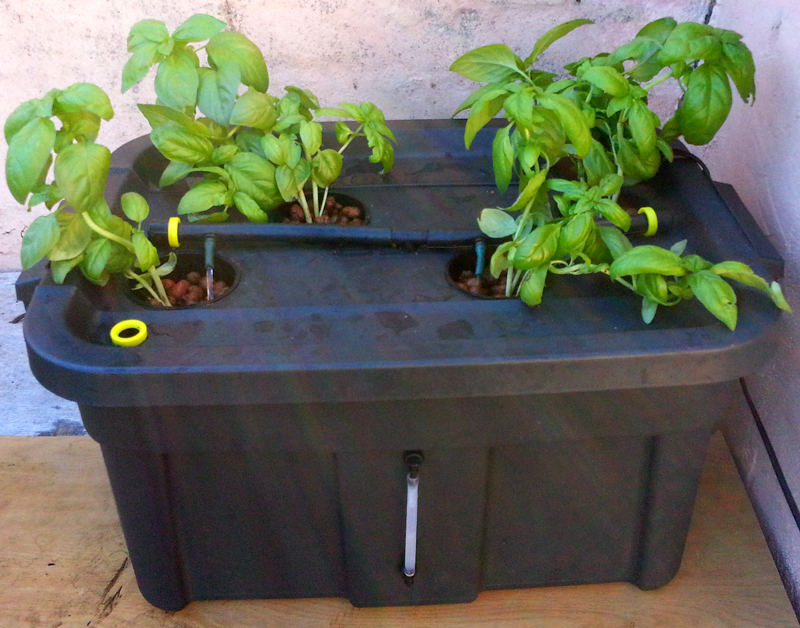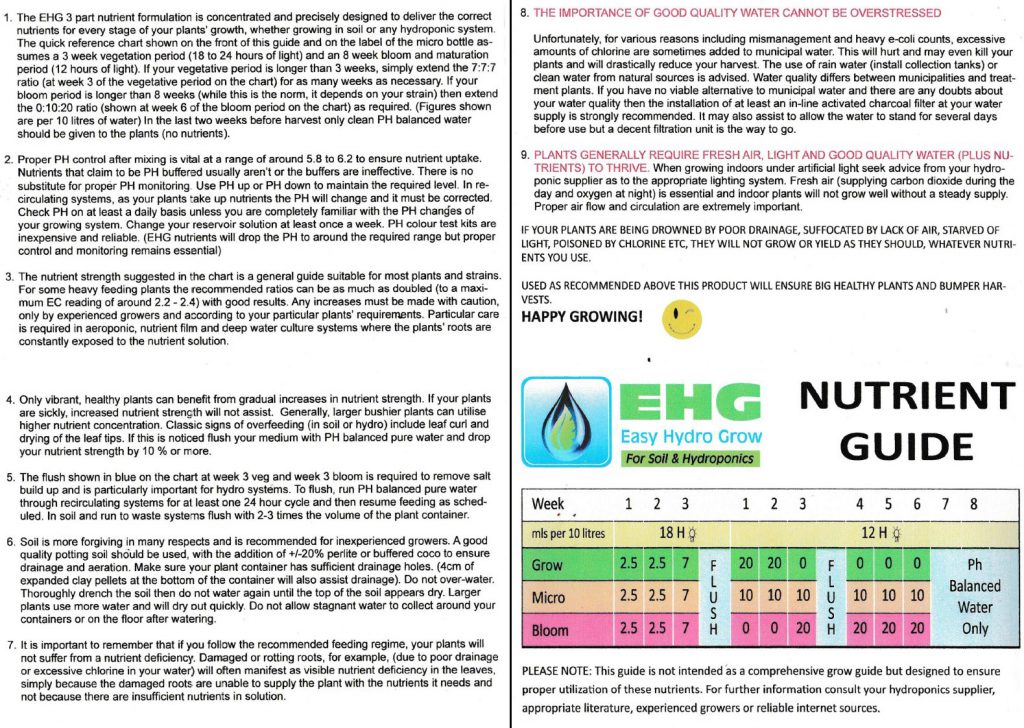- Depending on the type of plant, roots may start appearing from as little as 5 days.
- Cuttings should be checked regularly to make sure that they are as comfortable as possible.
- Cloner could be put on an outlet timer if only required to operate at certain intervals.
- Cuttings should ideally be removed before their roots get too difficult to gently pull out of the net pots.
- Avoid any rapid environmental changes when moving cuttings out of the cloner to a new location.
Author: Megan
DWC-Hybrid Kit Instructions
DWC-Hybrid Usage Instructions
Our DWC system is a hybrid system that combines two important hydroponic technologies: Hydro (drip) and DWC (roots immersed and suspended).
This system provides advantages of both techniques:
- Easy installation, usage and maintenance.
- Substantially shortens growth and flowering cycles compared to traditional systems, giving you more harvests per year!
- Continuous feeding and watering to roots from day 1.
- Extra Oxygenation of nutrient solution using the air pump & air-stone.
- Water is always moving. This avoids the formation of fungi, algae, mold, etc.
- No waste of water or nutrients. Clay substrate is also reusable.
The kit includes:
- 45 Liter Tank base (reservoir) with water level tube
- Lid with hole and plug for easier access to water in order to check pH
- A submersible pump & feeding manifold
- Air Pump & Air Stone
- Net Pots (mesh baskets) ( Either 2 or 4 pots, depending on model )
- LECA (clay pellets)
- Nutrient Kit (A, B & MKP)
- Ph Test Kit
- Ph Up Solution
- Ph Down Solution
- 3 x 5lt Containers to store your concentrated nutrients.
What do you do with this kit?
- Find suitable spot to place your system – take temperature and available light (for your plants) into consideration, as well as being able to work around your system comfortably & safely as your plants grow. The temperature of the water in the reservoir should also remain at close to 18-22C, to avoid pathogens that cause root-rot.
- Switch the outlet-pipe around to the outside of the reservoir. The end-cap could be pulled off to allow easy drainage into a bucket when nutrient solution needs to be replaced. A water valve may optionally be attached to the outlet (Not included in kit)
- Cut off 2 pin plug from submersible water pump. Thread through grommet next to Air Pipe (outwards) and connect to 3 pin plug ( Not included ).
- Fill the reservoir system with about 40 liters of water and add Nutrients (as per Hortimix Nutrient Instructions)
- Check pH of water. Average pH is about 6 (for more info https://hydroponic.co.za/hydroponics-quickstart/plant-phecppm/)
- Connect Air-stone to clear tubing in reservoir and submerse in water.
- Connect the other end of the clear tubing to the air pump, which is to be kept outside of the water reservoir, away from contact with any water!
- Connect the submersible water pump to the watering manifold using only the straight, basic fitting. (Do not use the water pump’s venturi fitting or its clear air tubing)
- Place lid on reservoir.
- Rinse LECA (clay pellets) in water before first use – until run-off is clear.
- When adding new plants (usually seedlings), gently rinse off potting medium from their roots with water, before planting into net pots, using your LECA (clay pellets)
- Connect pumps (water & air pump) to power and switch on. Make sure plant roots (NOT stem bases) are adequately covered by water flow once pump is on.
- Never let your system or plant roots run dry !
Start Growing!
A new mix of slightly stronger nutrient solution should be made once every week (or two, if lazy). You can use what’s left of the old solution to feed lawns or other plants. (Mix new batches according to Hortimix Nutrient Instructions)
You will soon be able to judge how much water your plants will use in a week, and may adjust your new mixes accordingly – but it’s ALWAYS better to have a little more solution in your system than what appears to be needed.
You may also decide to increase the water levels in your system as time goes by – bigger plants will have larger root systems suspended in the reservoir, and will use more water per week than small plants.
EHG Nutrient Guide
Hortimix Nutrient Preparation and Usage Table
Hortimix Nutrient Preparation and Usage Table
Mix 525g of Part A with 5 liters of fresh water in a container, label and shake until dissolved.
Do the same with the 350g of Part B in another 5 liter container, label, and shake well.
Monopotassium phosphate, MKP, KH₂PO₄ – Mix 125g in 5L of water and the follow attached table.
Store in a cool dark place.
Follow Feeding schedule on page 2 for the correct dosage or follow the instructions below to use the solutions you have made to feed your plants!
During the vegetation cycle always use equal quantities of both Part A and Part B nutrient to reach the required E.C. value. One week into the flowering cycle, 20% of the required volume of Part A should be replaced with MPK. This value can gradually increase to 40% by volume in the case of large plants. The E.C. values on the table are calculated using 1 liter of pH balanced water as the measuring standard with a base E.C. of less than 0.1.
The values are estimations only and this table can be used as a general guide.
When making up the nutrients solution, you should add the nutrients and adjust the pH afterwards with the pH Up or PH Down to get the desired pH of between pH 5.5 – 6.5. Avoid using pH Up and pH Down too many times in one solution as this can cause the pH to become unstable.
Schedule to be used as a weekly Feeding schedule.
It is best to give the plants new water and Nutrients at each stage (week).
Alternatively, you could use an EC Meter.
An EC meter measures the electrical conductivity in the water (the amount of nutrients), then you can adjust the water/Nutrients to the correct EC per growing Stage.
Lettuce can handle a maximum EC of about 1.2. Therefore you would not go beyond an EC of 1.2 for Lettuce, you would continue feeding the same amount of Nutrients for an EC of 1.2 for each additional week that your plants are in your system.
Tomatoes can handle an EC of 2 to 5, therefore you can go right to the end of the Feeding schedule and beyond (increasing in same increments). Try grow plants with similar EC and pH range. If you are growing for example, Lettuce and Tomatoes together, harvest your lettuce before you increase nutrients to a higher range otherwise your lettuce will get Nutrient burn (edges of leaves brown) if the Nutrient level is too high.
Please see optimum pH and EC readings for various types of plants and vegetables on our website Hydroponic.co.za. Click on the heading ‘Hydroponics’ and then on ‘Plant PH/EC/PPM’.
Never mix the nutrients together in their concentrated form, as this will cause nutrient “lock-out” making some minerals unavailable. It is best to begin by adding Nutrient A, stirring well, and then Nutrient B and stir well etc
Recommended feeding Schedule and Estimated E.C. Values
Amounts below per 1 liter of water:
| Part A | Part B | MPK | E.C. | Recommended Feeding | |
| Week 1 | 1 ml | 1 ml | 0.2 | Established Seedlings | |
| Week 2 | 2 ml | 2 ml | 0.4 | These values are good for advanced seedling stage and also for early clones | |
| Week 3 | 3 ml | 3 ml | 0.6 | ||
| Week 4 | 4 ml | 4 ml | 0.7 | ||
| Week 5 | 5 ml | 5 ml | 0.8 | ||
| Week 6 | 6 ml | 6 ml | 1.0 | Good values for full growing and early flowering | |
| Week 7 | 7 ml | 7 ml | 1.1 | ||
| Week 8 | 6 ml | 8 ml | 2 ml | 1.2 | |
| Week 9 | 7 ml | 9 ml | 2 ml | 1.3 | These values are for mid flowering stages |
| Week 10 | 7 ml | 10 ml | 3 ml | 1.4 | |
| Week 11 | 8 ml | 11 ml | 3 ml | 1.5 | |
| Week 12 | 8 ml | 12 ml | 4 ml | 1.6 | |
| Week 13 | 9 ml | 13 ml | 4 ml | 1.7 | Full flowering will require even greater nutrition but always monitor carefully |
| Week 14 | 9 ml | 14 ml | 5 ml | 1.8 | |
| Week 15 | 10 ml | 15 ml | 5 ml | 1.9 | |
| Week 16 | 11 ml | 16 ml | 5 ml | 2.0 |
Enjoy Growing!











